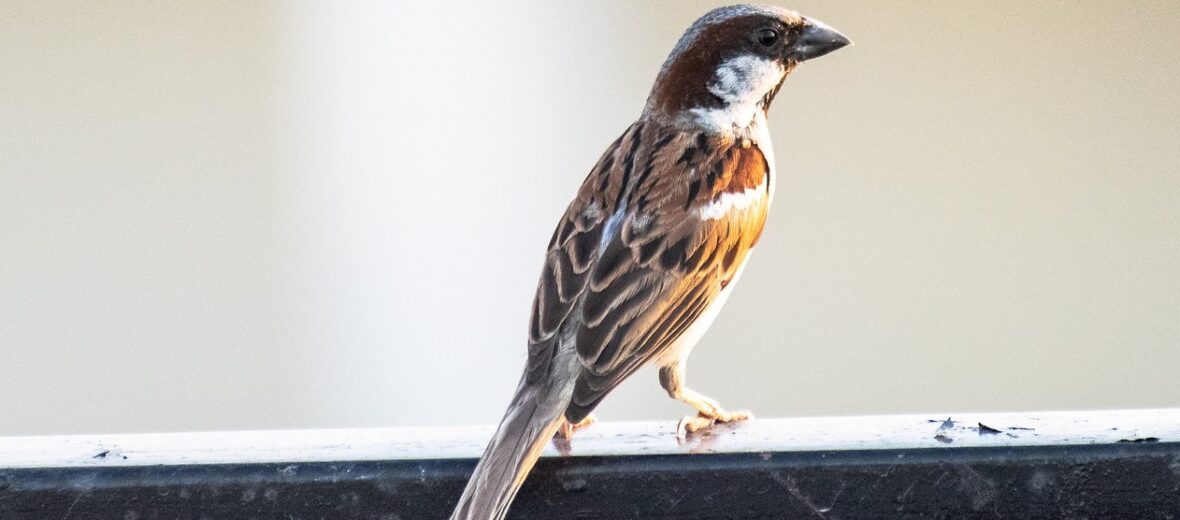
Found in towns, cities, suburbs, and farms (especially with livestock) it’s the house sparrow. You’ve seen them a million times, but probably never gave them a second thought, other than to just chase them away, or throw them a french fry while dining at your favorite fast food restaurant. These little birds are distributed throughout most of the world. House sparrows are listed as Least Concern by the IUCN as they have such a wide distribution.
First the Stats…
Scientific name: Passer domesticus
Weight: Up to 1.4 ounces
Length: Up to 7.1 inches
Wingspan: Up to 9.8 inches
Lifespan: Up to 10 years
Now on to the Facts!
1.) These birds are the paramount of adaptability, living their whole lives in warehouses or even 2,000 feet below ground in coal mines.
2.) Sparrows are primarily herbivores (eat plant matter) but are omnivores (eat plant and animal matter), when younger – eating insects as well.
3.) House sparrows are non-migratory birds.
4.) Speaking of adaptability, these critters have learned to hunt moths and other flying insects at night near porch lights.
5.) They often take over house martin nests. This categorizes them as an invasive species, of sorts. In many parts of Europe they have been observed nesting in colonies at the base of white storks’ nests.
But wait, there’s more on the house sparrow!
6.) The house sparrow attempts to raise 2 – 3 broods a year to perpetuate their species.
7.) They can sometimes engage in infidelity (have multiple partners) but they are mostly monogamous (mate for life).
Did you know…?
The house sparrow takes frequent dust baths. In doing this it will throw dirt and dust all over its body feathers, like it was bathing in water. This dust spot creates a small divet in the ground that the sparrow will defend against other sparrows. This is done to clean the sparrow of parasites and to generally keep clean.
8.) Cats are their main predators. They kill large numbers of sparrows while still young and inexperienced.
9.) These little birds are very social and engage in activities like dust and water bathing and social singing.
10.) Females lay between 1 – 8 eggs that take up to 14 days to incubate. 2 weeks after that they are reared and able to venture out on their own.
Now a Short House Sparrow Video!
Also, check out the Critter Science YouTube channel. Videos added frequently!
Want to suggest a critter for me to write about? Let me know here.




Leave a Reply